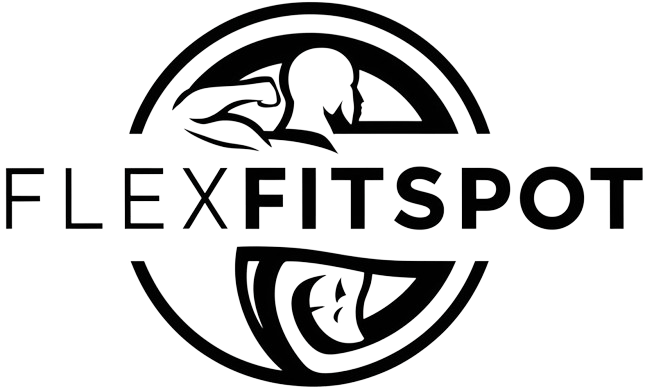
Introduction to Calisthenics Exercises
Calisthenics, derived from the Greek words “kallos” (beauty) and “sthenos” (strength), is a form of exercise that focuses on utilizing one’s own body weight for resistance. This exercise modality dates back to ancient Greece, where it was employed to train soldiers, and has since evolved into a popular method for achieving physical fitness and muscle development. The fundamental principles of calisthenics revolve around performing a variety of movements that engage multiple muscle groups, promoting functional fitness and enhancing overall body control.
One of the key reasons calisthenics is highly effective for building muscle is its emphasis on compound movements. Exercises such as push-ups, pull-ups, and squats require the coordination of several muscle groups, leading to more comprehensive strength gains and improved muscle symmetry. Additionally, calisthenics routines can be modified to increase or decrease difficulty, making them accessible to individuals at any fitness level.
An essential benefit of calisthenics is its reliance on body weight rather than external weights. This makes it a versatile and convenient option for those looking to build muscle without the need for a gym membership or expensive equipment. Calisthenics exercises can be performed virtually anywhere—indoors or outdoors—using minimal tools such as a pull-up bar or resistance bands. This flexibility allows enthusiasts to maintain their fitness regimen regardless of their environment.
Furthermore, calisthenics promotes not only muscular strength but also cardiovascular endurance, flexibility, and balance. By incorporating a wide range of movements, practitioners can achieve a well-rounded fitness profile that extends beyond mere muscle hypertrophy. This holistic approach to exercise ensures that individuals develop functional strength applicable to everyday activities.
In summary, the origins and principles of calisthenics contribute to its effectiveness as a muscle-building exercise. By leveraging body weight, it offers a practical, adaptable, and comprehensive method for achieving physical fitness, making it an ideal choice for those seeking to enhance their strength and overall well-being.
The Importance of Progressive Overload in Calisthenics
Progressive overload is a fundamental principle in strength training and muscle growth. It entails gradually increasing the stress placed on the body during exercise to stimulate muscle adaptation and growth. This principle is crucial in calisthenics, where the primary resistance comes from one’s body weight. Understanding and applying progressive overload can significantly enhance your muscle-building efforts.
In calisthenics, progressive overload can be achieved through various methods. One effective way is by adding repetitions. For instance, if you can comfortably perform 10 push-ups, aim to increase this number by one or two each session. Over time, this incremental rise in repetitions will challenge your muscles, prompting growth and strength gains.
Another method to implement progressive overload is by altering the tempo of your exercises. Slowing down the eccentric (lowering) phase of a pull-up or push-up increases the time your muscles are under tension, thereby enhancing muscle hypertrophy. Conversely, incorporating explosive movements can also provide a significant challenge, stimulating muscle fibers in different ways.
Exercise variations are also a valuable tool for progressive overload in calisthenics. For example, transitioning from standard push-ups to more challenging variations like diamond push-ups or one-arm push-ups can provide a substantial increase in intensity. Similarly, progressing from Australian pull-ups to full pull-ups, and eventually to muscle-ups, can continuously challenge your muscles.
Other methods include incorporating holds or pauses at different points in the exercise, adding weight through weighted vests or belts, and increasing the frequency or volume of your workouts. By consistently applying these strategies, you ensure that your muscles face new challenges, leading to continuous improvement and growth.
Incorporating progressive overload into your calisthenics routine is essential for achieving significant muscle growth. By systematically increasing the difficulty of your exercises, you create the necessary conditions for your muscles to adapt and grow stronger. Whether through additional repetitions, tempo changes, exercise variations, or other methods, progressive overload remains a cornerstone of effective muscle-building in calisthenics.
Exercise 1: Pull-Ups
Pull-ups are a foundational calisthenics exercise that significantly enhances upper body strength. To perform a proper pull-up, begin by gripping a pull-up bar with your hands slightly wider than shoulder-width apart. You can use either an overhand grip (palms facing away from you) or an underhand grip (palms facing towards you), each targeting different muscle groups. The overhand grip predominantly works the muscles of the upper back, shoulders, and forearms, while the underhand grip places more emphasis on the biceps.
Start from a dead hang position, with your arms fully extended and your feet off the ground. Engage your core and pull your body upward by driving your elbows down and back. Your chin should clear the bar at the top of the movement. Lower yourself back to the dead hang position in a controlled manner. This completes one repetition. Pull-ups primarily target the latissimus dorsi, the large muscles in your back, but also engage the trapezius, rhomboids, deltoids, and biceps.
The benefits of pull-ups are manifold. They effectively build upper body strength, enhance muscle tone, and improve functional fitness, which is essential for everyday activities. However, beginners often find pull-ups challenging. For those struggling with pull-ups, starting with assisted variations can be highly beneficial. One progression is using resistance bands to offset some of your body weight. Loop a band around the bar and place your feet in the band for assistance. Another method is performing negative pull-ups, where you jump or use a platform to get your chin above the bar and then slowly lower yourself down.
Consistent practice of these progressions will build the strength necessary to perform unassisted pull-ups. Remember, maintaining proper form is crucial to avoid injury and ensure maximum muscle engagement. As you advance, incorporating different grip variations and increasing the number of repetitions will continue to challenge your muscles and promote growth.
Exercise 2: Push-Ups
Push-ups are a fundamental calisthenics exercise that effectively builds upper body strength and muscular endurance. To perform a standard push-up correctly, start in a plank position with your hands placed shoulder-width apart, and your body forming a straight line from head to heels. Lower your body by bending your elbows until your chest nearly touches the ground, then push back up to the starting position. This exercise primarily engages the pectoral muscles, triceps, and core, providing a comprehensive upper body workout.
There are several push-up variations to target different muscle groups and increase the difficulty level. Diamond push-ups, for example, involve placing your hands close together under your chest, forming a diamond shape with your thumbs and index fingers. This variation emphasizes the triceps and inner chest muscles. Wide-arm push-ups, on the other hand, involve placing your hands further apart than shoulder-width, which targets the outer chest and shoulders more intensively.
For beginners or those looking to progress, it is advisable to start with knee push-ups or incline push-ups, where your hands are elevated on a bench or step. As your strength improves, you can transition to standard push-ups and gradually incorporate more challenging variations like decline push-ups, where your feet are elevated, or plyometric push-ups, which include a clap in mid-air.
To maximize the benefits of push-ups, maintain proper form throughout the exercise. Keep your core engaged to prevent your hips from sagging, and ensure your neck remains in a neutral position. Regularly incorporating different push-up variations into your routine will help build muscle, improve endurance, and prevent plateaus, ensuring continuous progress in your calisthenics journey.
Exercise 3: Dips
Exercise 4: Squats
Bodyweight squats are a fundamental calisthenics exercise that can significantly enhance lower body strength. To perform a bodyweight squat correctly, begin by standing with your feet shoulder-width apart. Your toes should point slightly outward. Engage your core and keep your chest up as you initiate the movement by bending your knees and pushing your hips back, as though you are about to sit in a chair. Lower yourself until your thighs are parallel to the ground, ensuring that your knees do not extend past your toes. This position helps to mitigate the risk of knee injuries. Finally, press through your heels to return to the starting position while maintaining a straight back to avoid stress on the lower back.
Squats are incredibly beneficial for targeting the quadriceps, hamstrings, and gluteal muscles. The movement not only enhances muscular strength but also improves balance and coordination. Regularly incorporating squats into your workout routine can lead to increased muscle mass and endurance in the lower body.
There are several variations of the squat that can increase difficulty and target different muscle groups. Pistol squats, for example, are a more advanced variation that involves performing a squat on one leg while extending the other leg forward. This exercise requires significant balance and strength, making it particularly effective for further developing the quads and glutes. Jump squats, on the other hand, add an explosive element to the traditional squat. By jumping at the top of the squat, you engage the fast-twitch muscle fibers, which helps to build power and agility in addition to strength.
Incorporating these squat variations into your routine can provide a comprehensive lower body workout, ensuring that multiple muscle groups are engaged and challenged. Whether you are a beginner or an advanced athlete, squats offer a versatile and effective way to build muscle fast.
Exercise 5: Planks
Performing a plank correctly is crucial for maximizing its benefits. Start by positioning yourself face down on the floor, resting on your forearms and toes. Ensure your elbows are directly beneath your shoulders, and your forearms are parallel to each other. Engage your core by pulling your belly button towards your spine and maintain a straight line from your head to your heels. It’s essential to avoid sagging your hips or arching your back, as this can lead to improper form and potential injury. Hold this position for as long as you can while maintaining proper alignment.
Planks are highly effective for building core strength and stability. The primary muscles worked during a plank include the rectus abdominis, transverse abdominis, and obliques. Additionally, planks engage secondary muscles such as the shoulders, glutes, and quads, making it a comprehensive exercise for overall body strength. By consistently incorporating planks into your routine, you can improve posture, reduce the risk of back injuries, and enhance overall functional fitness.
To increase the intensity and challenge of standard planks, consider incorporating variations. Side planks are an excellent way to target the obliques more intensively. To perform a side plank, lie on your side, supporting your body with one forearm, and stack your feet on top of each other. Lift your hips to create a straight line from head to feet and hold the position. Another variation is the plank leg lift, where you lift one leg at a time while maintaining the plank position. This adds an element of instability, further engaging the core and glutes.
Incorporating these variations can prevent workout monotony and help you continue to build muscle effectively. By mastering the plank and its variations, you can significantly enhance your core strength and overall stability.
Creating a Balanced Calisthenics Workout Routine
A well-structured calisthenics workout routine is essential for building muscle efficiently and avoiding overuse injuries. The key to a balanced routine lies in targeting all major muscle groups, incorporating rest days, and varying exercises to prevent plateaus. By integrating the top 5 calisthenics exercises—push-ups, pull-ups, dips, squats, and planks—you can create a comprehensive workout that addresses both strength and endurance.
For beginners, it is crucial to start with manageable sets and gradually increase the intensity. A sample beginner routine might include:
- 3 sets of 10 push-ups
- 3 sets of 5 pull-ups (assisted if necessary)
- 3 sets of 10 dips (using a bench for support)
- 3 sets of 15 bodyweight squats
- 3 sets of 20-second planks
Intermediate athletes can elevate their routine by adding more repetitions and integrating variations of the basic exercises. An intermediate routine could look like this:
- 4 sets of 15 push-ups (including variations like diamond push-ups)
- 4 sets of 8 pull-ups
- 4 sets of 12 dips
- 4 sets of 20 squats (adding jump squats for intensity)
- 4 sets of 30-second planks (including side planks)
Advanced athletes should aim to push their limits with high-intensity workouts and advanced variations. An advanced routine may consist of:
- 5 sets of 20 push-ups (including plyometric push-ups)
- 5 sets of 12 pull-ups (adding weighted pull-ups)
- 5 sets of 15 dips (using parallel bars)
- 5 sets of 25 squats (incorporating pistol squats)
- 5 sets of 45-second planks (adding dynamic movements)
Rest days are integral to any workout regimen, allowing muscles to recover and grow. It is advisable to have at least two rest days per week. To prevent plateaus, regularly vary your exercises and increase the intensity. Tracking progress through a workout journal or fitness app can help you stay motivated and monitor improvements. Set achievable goals, celebrate milestones, and remember that consistency is key to success in calisthenics.



























